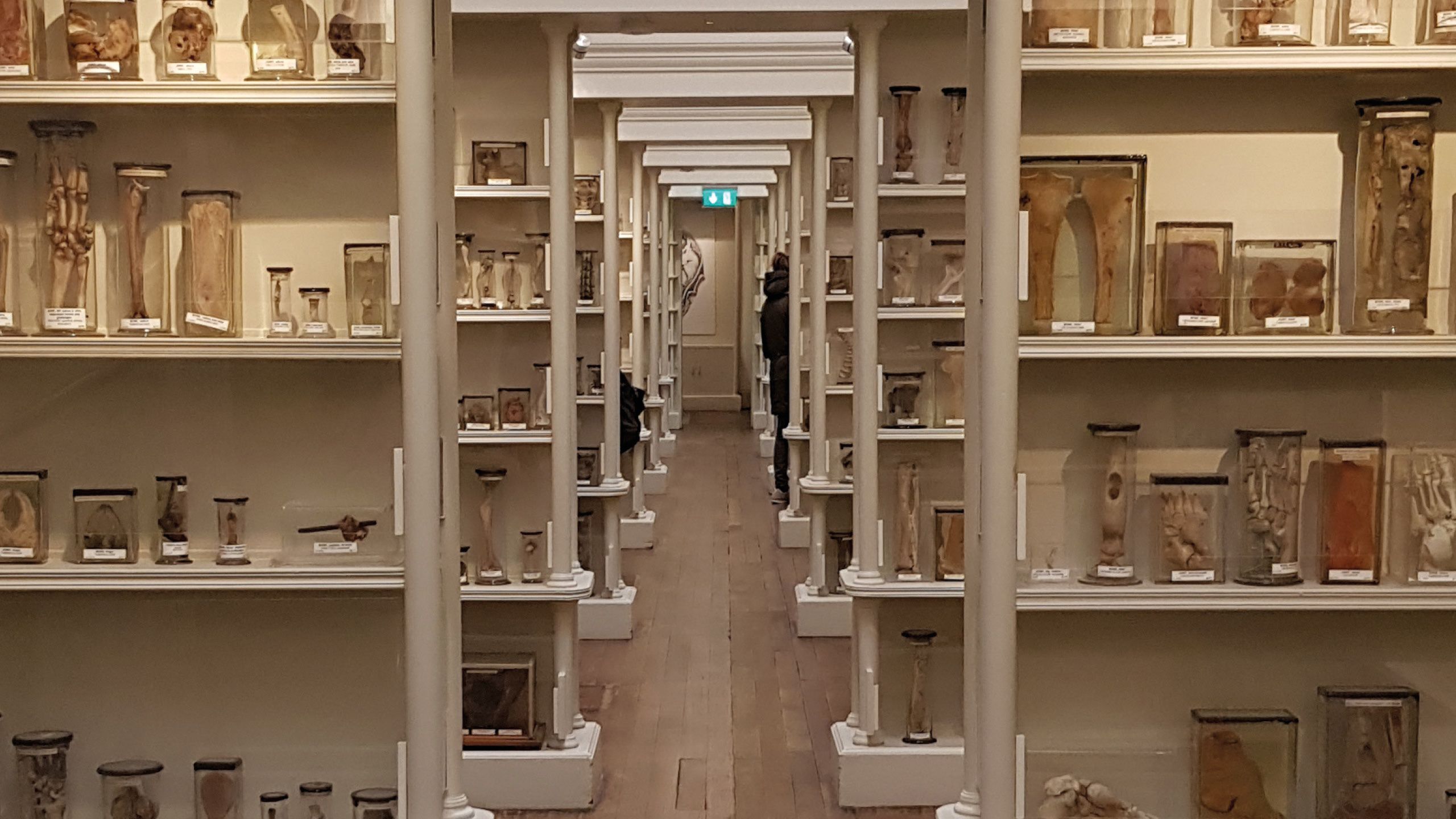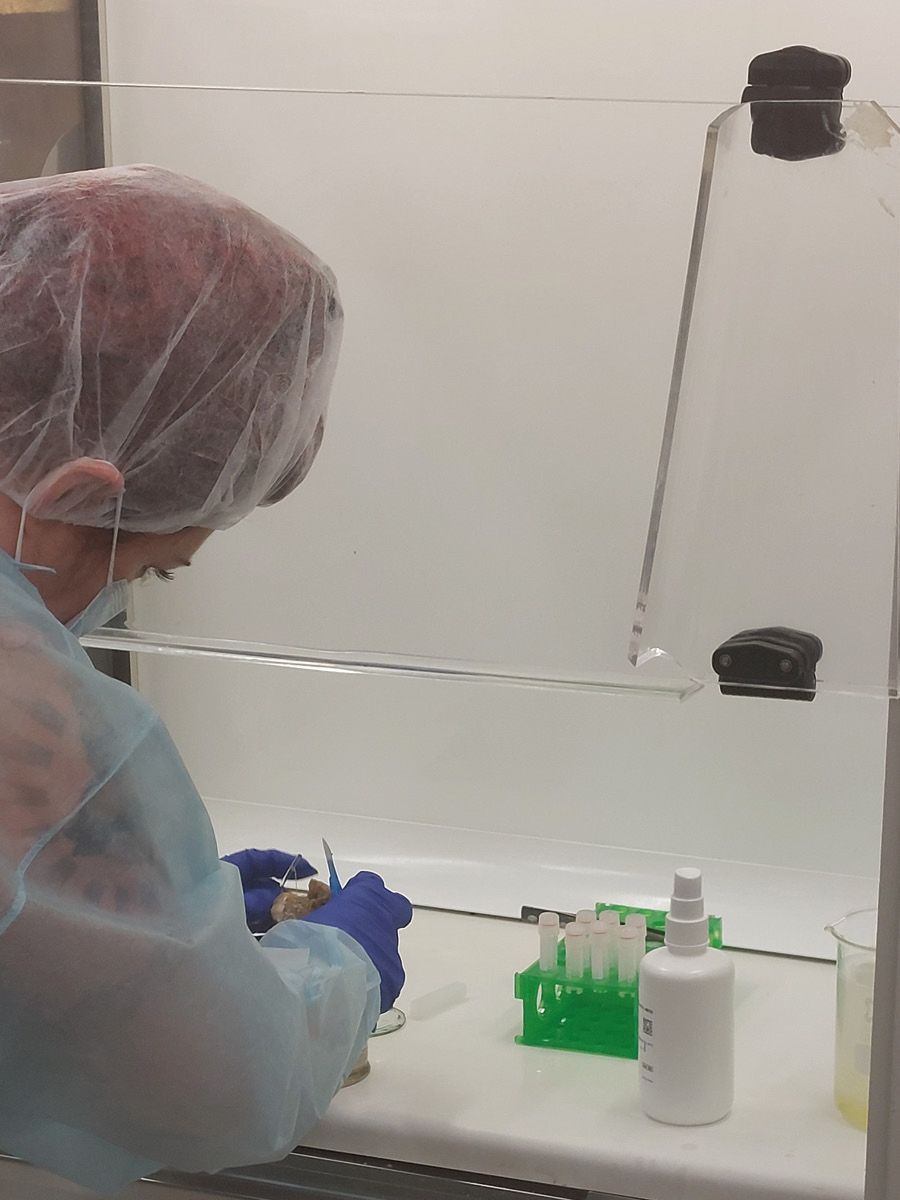Key to the future
Cat Irving highlights Surgeons’ Hall Museums’ contribution to recent research involving collections of human remains)

Cat Irving:Human Remains Conservator, RCSEd
The conservation laboratory at Surgeons’ Hall Museums is where we care for the human remains in our collection. Conducting research into our collections is a key element of the work of the collections team. As well as undertaking our own research we actively encourage visits from researchers from other institutions who over the years have looked at areas such as surgical instrument development, our historic art collections, and a range of diseases shown in our human remains collections.
In the last few years new developments in technologies such as genomic sampling have unlocked further research potential for preserved human tissue. The focus for this is historic pathogens – the agents that cause disease, such as bacteria, viruses, fungi and parasites. Pathogens can be found in many of the human remains that reside in our care, and the ability to extract and analyse them further emphasises the ongoing importance of these collections and that they can still make a significant contribution to modern medicine.
This year Surgeons’ Hall Museums has undertaken sampling for two research projects at universities in the US and Canada, both looking at the genomes of different viruses.
Maintaining integrity
The sampling procedure involves very small amounts of tissue, less than 200mg. Nevertheless, before agreeing to any sampling going ahead, the collections team meet to discuss the ethics and practicalities of the proposal. For us, one of the key issues is how sampling will affect the tissue. Removing too much tissue may alter the appearance of the pathology being demonstrated, and reduce the value to both education and further research.
In one recent request the preserved remains were very small – a piece of skin only 2.5cm long and 6mm wide preserved in alcohol. To take even a small sample would be detrimental and so it was decided, in conjunction with the researchers, to sample only the alcohol with some abraded material from the surface in the hope that their extraction techniques were sensitive enough to detect the genetic material in this.
Usually sampling is from remains that are large enough to ensure the removal of small amounts of tissue is invisible to the naked eye. The jars are opened to access the tissue in the same manner as in the conservation process and sampling is carried out by our human remains conservator after extensive discussion with the research institutions.
The purpose of this research is to understand these diseases historically. Looking at the genome at different points in time allows deeper understanding of the evolutionary history of the pathogens that have affected humans in recent centuries. Human remains in medical museums are one of the few places where historic pathogens can be identified, making collections such as ours an important resource for pathogen research.
Medical contributions
That we hold a large collection of fluid-preserved remains is especially important: virus genomes can be either DNA, like our own, or RNA. RNA is single-stranded and therefore less stable than the DNA double helix. This means the viral RNA in buried or mummified tissue is usually too degraded for sequencing, and so genomic analysis is limited to fluid-preserved tissue or tissue that has been discovered in permafrost.
This is not just something that helps to get a historic perspective on disease. A deeper understanding of the ways in which viruses evolve and what makes some variants more easily transmissible, or have a deadlier effect, could inform the way we respond to disease outbreaks in the future. In the light of the COVID-19 pandemic – itself an RNA virus – we can see how human remains collections such as ours have not just contributed to the medical knowledge of the past, but are still playing an important part in garnering knowledge for the future.

